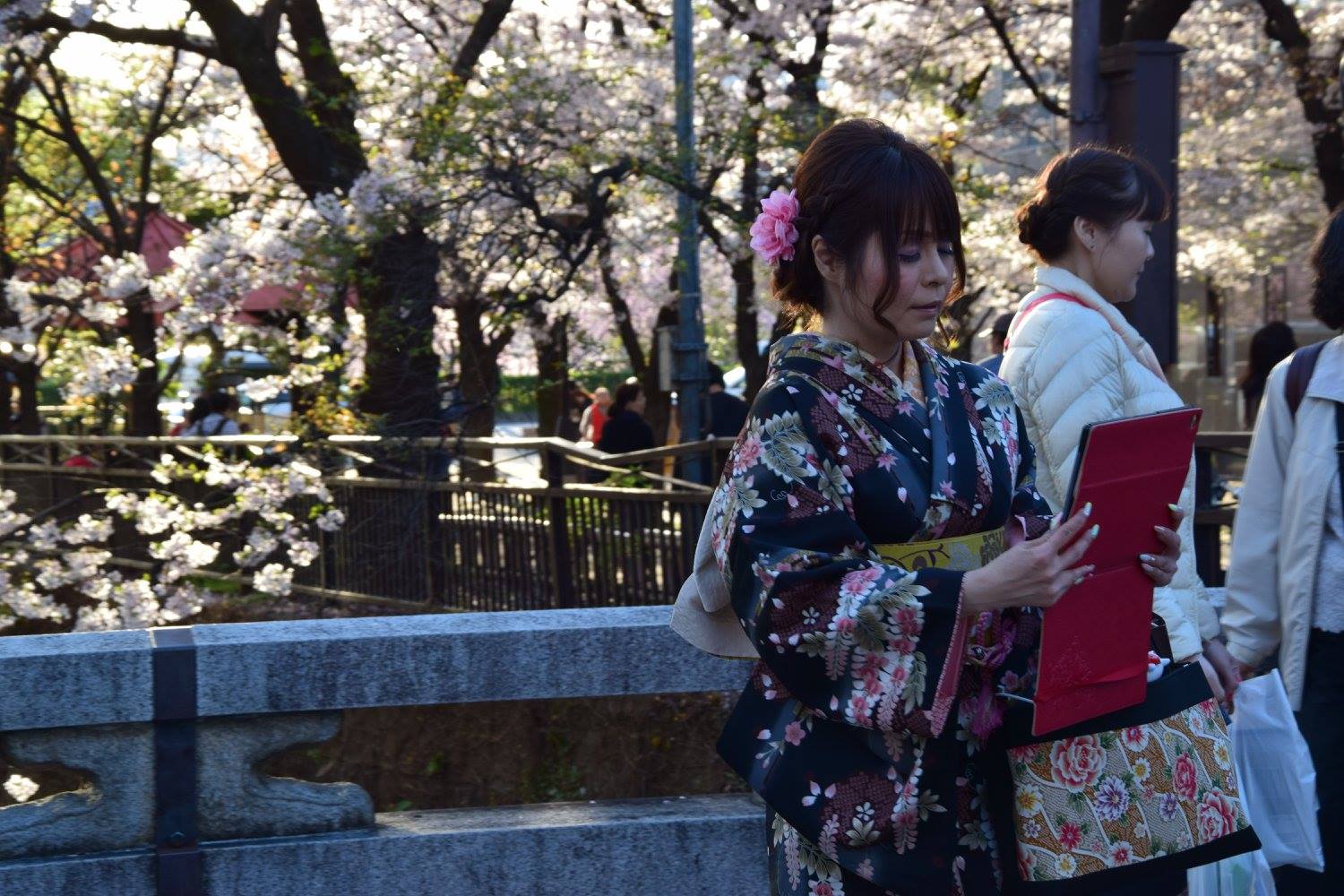7 tips for enjoying cherry blossom season in Japan
Japan changes, the temperature rises, a sweet smell is in the air and flocks of people are gathering in places all over Japan. Somehow the rules change, people eat in the streets and drink outside, not everywhere, but under the charm of beautiful pink flowers; it's sakura season.
Japan is nearing one of it's most popular times of the year; cherry blossom, or sakura, season. It's a big thing in Japan, drawing tremendous amounts of both local as well as international tourists. While cherry blossoms can be seen in any part of the world, in Japan it is not just the cherry blossom, but the whole atmosphere that comes with it which makes it special.
Sakura season is one of the best times of the year to visit Japan. The weather is comfortable, there's lots to do and temples and shrines are even more beautiful than usual. But how do you plan a trip around cherry blossom time? Here are some tips to have a maximum chance of success.
Check the cherry blossom forecast
Cherry blossom in Okinawa blooms as early as the beginning of january due to the warmer temperatures. However, the season lasts until around the end of April/the beginning of May, so there's plenty of time to plan your trip if you don't care where in Japan you'll go. However, if you do have a specific area you want to visit, say Kyoto for example, check out the more detailed and regularly updates forecast on the Japan National Tourism website. Blooming of cherry blossom lasts for about two weeks, with the full bloom (mankai) being reached after about 1 week after the firts blossoms open up.
Decide where you want to see cherry blossom
There are many places to enjoy sakura. Depending on what you like, it can be good to decide on where to see the sakura beforehand. I personally enjoy Kyoto, due to the large variety of places to see the cherry blossom (both in the city as well as in more natural settings), the beautiful Kamo river and because it's still so traditional. However, there are many, MANY more beautiful places to watch sakura. Here you can find some recommendations on where to go.
BOOK!
Since cherry blossom season is so popular in Japan, not only foreigners fill up the hostels and hotels, but also national tourists. Therefore accommodation can fill up fast, especially in the most popular cities like Kyoto and Tokyo. Also, be prepared for higher fares at this time due to the large influx of tourists.
Participate in Hanami
Hanami is the Japanese word for 'flower viewing' and is the most important word when referring to the Japanese sakura celebrations. It is usually done during the peak of cherry blossom bloom and while you can participate by just walking around and watching the flowers, the most common way is to have a picnic under the beautiful cherry blossom trees. It is truely amazing to participate and sit between celebrating Japanese people eating from their Bento's and drinking their (alcoholic) drinks. However, it is important to keep in mind some unwritten rules.
- Respect the trees!! The cherry blossom trees should not be damaged in whichever way. I remember when I studied in Kyoto, someone broke a branch off of a cherry blossom tree. This was big news in both Kyoto and I even believe in other parts of Japan. Here in the Netherlands we wouldn't care to much if a tree branch was broken off, but in Japan the police became involved and it seemed very important to catch the culprit.
- Don't leave your garbage. The Japanese are very clean. They never leave their garbage, and definitely not underneath the beautiful cherry blossom trees. So be sure to bring a garbage bag and clean up after yourself so you can truely experience the Japanese ways of hanami.
- Bring food (bento boxes for example) and drinks (but be sure to check the rules of the park you're going too, since some don't allow alcohol or barbecues). Also, hanami is about sharing food as well, so bring some paper cups and plates so everyone can join.
Find a festival
Seek out a cherry blossom festival to get the most out of your experience. If you're in town at the top-bloom of cherry blossoms, it is likely that there will be a festival, somewhere. It can sometimes be difficult to find out where, but local hostel/hotel staff can probably help you with that and show you the way to the best festivals in, for example, parks or temples.
Eat the seasonal specials
All kinds of special food and drink items can be found during sakura season. In the konbini you can find special rice balls (onigiri), red-bean treats and sakura-mochi, which are sticky rice cakes. Furthermore, in some places you will be able to find special sakura bento boxes filled with all kinds of food perfect for celebrating hanami.
Stay up after nightfall
In both cherry-blossom season and autumn-leave season in Japan, nightfall doesn't mean the end of the festivities. At this time, with cherry blossom in full bloom, a lot of places light up the beautiful trees. You can find these places outside in the city, but also many temples, shrines and castles will open their doors at night to the general public. One of my most favorite places in Kyoto are Maruyama park, where you can see a huge, old and beautiful cherry blossom tree, and Toji temple, where you can see the five-storied pagoda amidst the lit up trees.
Let me know if you were able to experience the cherry blossoms this year and whether you liked it in the comments below! :)

- 5214 reads












Add new contribution